Workshop on international nursing teaching method(2018)
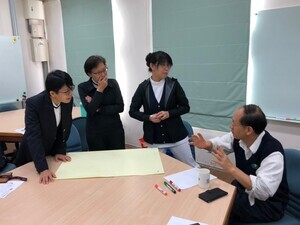
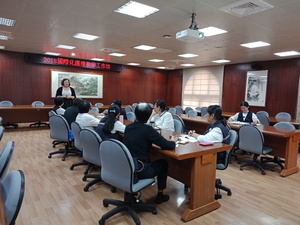
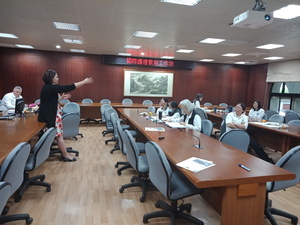
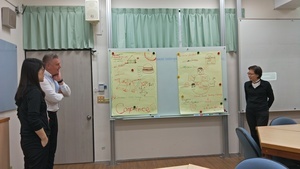
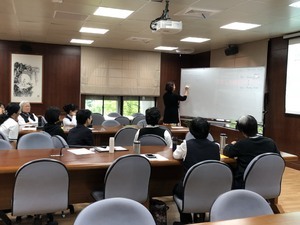
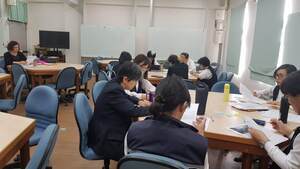
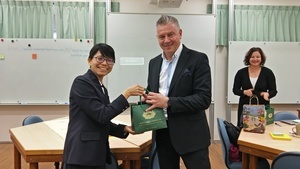
In this workshop on nursing teaching methods, Dr. Marjo Palovaara, a nursing scholar, and Dr. Pertti Malkki, dean of the "University of Applied Sciences/JAMK University of Applied Sciences" in Helsinki, Finland, are invited to have a discussion and interactive exchange with teachers and students on the current situation and trends of the global nursing development, including the trend of global nursing talents cultivation and the trend of international nursing education, based on the practice and educational management experience of nursing. The course content includes the introduction of Finnish education and health care system, innovation and construction of "ability-oriented education" and "student-centered teaching method", exploration of quality of higher education in the future from the perspective of development, ability-oriented education, and health care of empirical nursing, exploration of health care specialty and education in the next 20 years.
Introduction to Finnish education and healthcare system
Finland is located in northern Europe. It borders Sweden, Norway, and Russia. The main languages are Finnish, Swedish, and English. Due to the environment, geographical location, and culture, sauna facilities are available in Finnish homes or many public places. "Sauna bath" is already a part of life and "cupping" is also used. But "cupping" is only done in your home, not in the health care system. Nursing education in Finland is based on the regulations of the EU and the Finnish Ministry of Education. The curriculum design is mainly arranged from the three aspects of learning theory, clinical practice, and students' autonomous learning. The learning scores each account for one-third of the total learning scores. So, after students get a degree, naturally have a license in nurse practitioner, which can also be in any European Union countries when nursing practitioner hospital. In Finland, the ratio of nursing illness to illness is 1 nurse practitioner to 4 patients in the system and medical system of health care. The operation hospitalization time can be as short as possible, the time is about less than 12 hours; In the intensive care unit, the average hospital stay is about three to four days before you are discharged. In response to technological advances and changes in healthcare practices, the government has built a new hospital in downtown Helsinki. In terms of hardware design, only single rooms. The software is designed to be a fully paperless and digital ward.
Creating competence-based education & Student centered teaching method
"Ability-oriented education" is not only based on curriculum design from nursing education, ability and learning outcomes, curriculum content, teaching methods, and curriculum design to evaluation and programming. Also, consider learning concepts and teaching models, and then the student-centered approach to teaching. Before deciding the students' learning methods, we must consider the teaching resources, learning objectives, students' degree, and so on. The application of teaching methods, available small group teaching, problem-oriented teaching, practical classes, clinical practice, flip the classroom or E-learning (e-learning) and so on, these different methods can construct the students' ability. E-learning is one of the main teaching strategies in Finland. Because it is open, through the Internet and the global information network (WWW) to make communication more convenient, anytime, anywhere to learn, teachers and students are through a variety of information and network technology to interact. Not only can students learn how to think, but also can directly absorb knowledge. In traditional classroom teaching, textbooks are used. In classroom teaching, students learn knowledge mainly through teachers' explanations or by absorbing knowledge from books. However, E-learning can enable students to learn actively and independently, learn directly through textbooks and learn problem-solving methods, and can also receive support from teachers or some experts and scholars. And the teacher's role is an organization and supporter, not a knowledge spreader. Therefore, the strategies for teaching E-learning will vary according to the model of the course and the learner's background. The teacher's role function is therefore different.
Quality Work in Higher Education Institutions in Future–View to the Development
Education is one of the cornerstones of Finnish social welfare. In Finland, quality management of higher education follows European standards and guidelines for quality assurance of higher education, which also include standards and guidelines for quality assurance within institutions. In Finland, the national quality assurance system has been legislated to achieve a certain quality of higher education. Finland's s own institutions of higher education, the ministry of education and culture, and the education evaluation center carry out their respective functions with objectives of the review. Quality management at JAMK University of Applied Sciences has been recognized by the European Commission and the Finnish Education Assessment Centre. For the operation and management of JAMK, quality management is necessary JAMK. This will support JAMK's mission, vision, and values in managing education and ensure the quality of teaching.
Competence-based education and evidence-based healthcare: Clinical practice as a tool of development and collaboration
"Interaction, cooperation and exploration" is a very important learning spirit in Finnish education. Innovation and construction of "ability-oriented education" and "student-centered teaching method" are their educational concepts. The design of the course is mainly from three aspects: learning theory, clinical practice, and students' autonomous learning. The education system is almost based on innovative learning methods and techniques. To achieve these goals, E-learning, PBL, or flip-classroom strategies are often used in the application of teaching strategies. Nursing education mainly focuses on practice. How to support students' clinical training and how educational institutions develop students' later working lives are important.
Students' autonomous learning
Ability-oriented education in which students are responsible for their own learning. The teacher's role is mainly to apply a variety of homework and evaluation methods to assist students' autonomous learning. For example, E-learning is one of the teaching strategies to assist students' autonomous learning. Evaluation is ongoing in an ability-oriented education. How to establish the evaluation criteria to construct the students' ability is important.
Teachers as a bridge between theory and clinical nursing
Many new nursing staff will encounter in clinical work that they do not know how to apply the theory to clinical practice. Therefore, the cooperation between nursing schools and hospitals, students' reflective skills and critical thinking, school curriculum design, and teaching methods are complementary to each other, which can construct the basis of students' application of empirical nursing data.
How teachers act as such a bridge in the application of teaching strategies must be considered. For example, how to teach the process of reflection and critical thinking, how to choose students' learning methods, the time and burden students need in autonomous learning, and how to make a connection between teaching and autonomous learning need to be considered. Different teaching methods, homework design is also different, also can evaluate students' ability. Therefore, teachers must have the ability to guide students, the ability to design activities to enhance students' reflective thinking, the ability to give feedback to students, and the ability to design appropriate evaluation methods, etc.
On the whole, Finland's education system attaches great importance to students' abilities of autonomous learning and problem-solving. The curriculum is designed in a step-by-step manner to cultivate these abilities from kindergarten to university. Students have become accustomed to taking responsibility for their studies. For example, the ability to read, not only read textbooks but also read some related courses. Therefore, students can take the initiative to learn, willing to learn.
